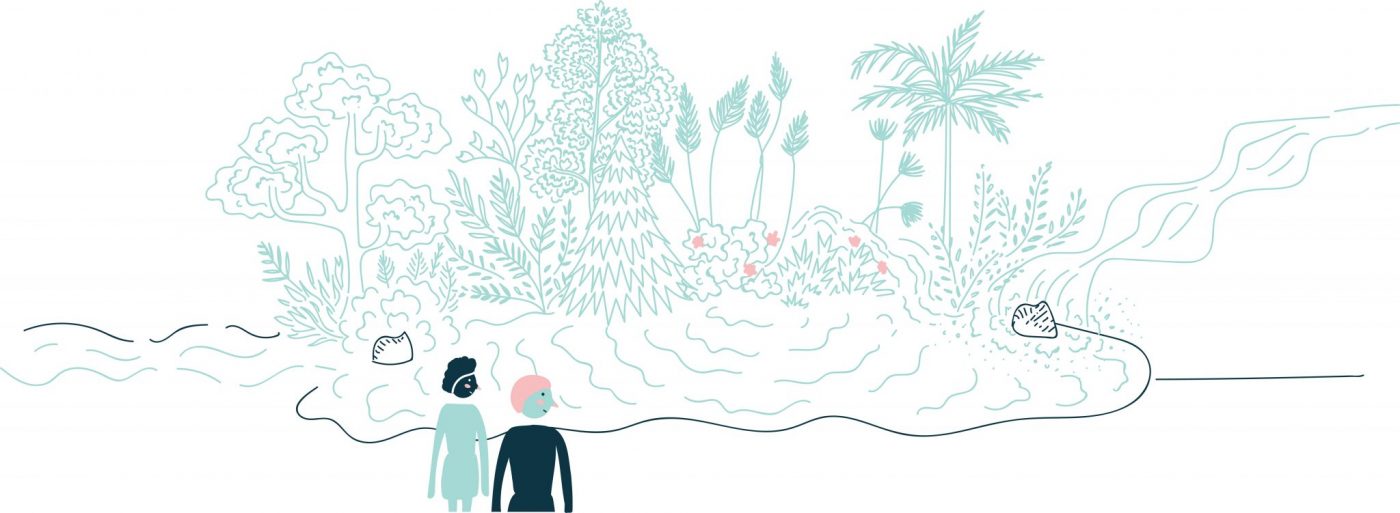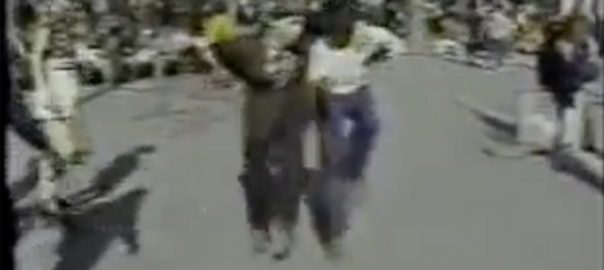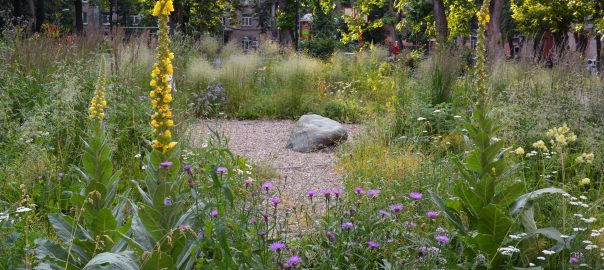 Since humans settled about 10,000 years ago, we have significantly altered and explored the landscape to create the civilization we now have. The landscape has been a source of material and non-material resources, feeding us in all senses. Ecologically rich landscapes associated with technologies were essential for all societies to emerge. The shape of landscapes along our history, have reflected how we produce our habitat and the goods that sustain us, our economies, and the way we live and relate to each other.
Since humans settled about 10,000 years ago, we have significantly altered and explored the landscape to create the civilization we now have. The landscape has been a source of material and non-material resources, feeding us in all senses. Ecologically rich landscapes associated with technologies were essential for all societies to emerge. The shape of landscapes along our history, have reflected how we produce our habitat and the goods that sustain us, our economies, and the way we live and relate to each other.
Healthy landscapes are multifunctional and biophilic—they prioritize people and biodiversity over other uses—and are closely correlated with human’s physical, mental and spiritual health and well being. For instance, in Boston, the Emerald Necklace was conceived in the late 19th Century to regenerate the polluted industrial city. It is an early example of a green infrastructure along the Muddy River that connects parks, squares, the Jamaica Lake, and the first built wetland. After more than a century, the greenway protects the river from diffuse pollution, erosion and rainwater run-off, biodiversity thrives and people move and have multiple passive and active activities. So, there are genuine intrinsic material and non-material values of a green-blue landscape.
Why is that? I believe we need nature in our lives, and the landscape we live in and access everyday matters a lot! Every single urban dweller has the right to such green landscapes—safe and healthy with trees and clean waters, silent and peaceful. Ecological components (parks, squares, green streets, community gardens, green school yards etc.) should be distributed in the urban tissue, accessible to all people. In Rio de Janeiro some beaches are known to be the most democratic spaces, where all people meet and enjoy nature.
The market has ruled over the urban landscape, with economies prioritizing urban sprawl and segregation from the early times of industrialization, investing in high and fast economic return. Today, the city is a huge business, and the land is the precious asset that is in an unfair dispute between the corporations and the population. Corruption is a tremendous driver to maintain the urban expansion changing the landscape, and perpetuating the concentration of decisions and financial gains in the hands of few, in spite of the needs of the common.
There is a factor that plays an important role in many societies: fear. Security comes first, and what is the response of frightened urbanites? Divide the city! Divide the landscape! Live in “safe” gated developments. The market loves and uses this fear in its favor. And what about the rest of the working population? Depending on the educational opportunities to which they had access, they may have to live in poorly serviced degraded landscapes, in distant neighborhoods with precarious transit systems, or in worst-case scenarios, slums in vulnerable areas where the formal market cannot operate. In both cases most of the landscape has been depleted and converted into inert inhospitable surfaces, and their gardens and plants play a mere cosmetic role.
Rio de Janeiro is an excellent example of hostile and segregated urban landscape, in spite of its stunning hills and ocean views. The area was originally covered by Atlantic Rainforest. The steep hills and waters in the lowlands dominated the landscape until the late 1800s. In the process of the fast urbanization after the 1900s, the landscape was deeply transformed, land was created and ecosystems disappeared. Most of its wetlands and rivers vanished underground or in drainage canals connected to sewage disposal. The city has sprawled since the 1960s, driven by car-oriented transportation. The lack of proper social housing left almost no choice for less privileged people but to live in areas vulnerable to landslides (the steep slopes in the massifs that divide the city) and floods (the lowlands), or in distant regions. The city is socially segregated, with wealthier people living in areas close to the ocean and green areas, and poorer residents residing in the favelas (slums) located in the slopes facing the fabulous sights. Air, water and even beach pollution is a serious issue that threatens the health and well being of the population, both rich and poor. Fear dominates residents from all social classes. Old and new buildings, residential and commercial complexes are gated and hire private security.
How to achieve safe and healthy landscapes for all is a huge challenge. I believe people and biodiversity have to be the top priorities. The urban form matters and requires a proper balance between multiuse built and open vegetated areas in dense, socially diverse urbanization. Urban sprawl impacts not the only the landscape but also requires heavy investments to keep the entire territory healthy (pollution free) and safe under official public control.
There must be effective participation by the residents, not only in the process, but in the choices and outcomes that affect their daily lives. There is a people-nature reconnection movement that is happening all over the world. Citizens are fighting and working together to protect and enhance green and blue (water) areas, they are collectively planting food. These civic movements are improving the sense of community and the local culture. There are many examples that are blooming and transforming hearts, minds and landscapes, gathering people in public spaces to learn about the sources of life. They are even inspiring an increasing number of cities to prioritize the conversion of gray surfaces into high performance landscapes, building green infrastructures and emphasizing mass and clean transportation for all. Social media is playing an important role to connect people with varied social, cultural and educational backgrounds and enable the exchange of knowledge and experiences.
An excellent example of citizens’ engagement power is Verdejar, a social-environmental NGO founded 18 years ago. It is located in one of the largest and most problematic favelas in Rio de Janeiro. Their activities started with one resident planting native trees in a degraded slope at the Misericordia Hills to provide shade, prevent erosion, and protect it against further invasions. Others joined and became dynamic members. People gained environmental and civic awareness. The result today is a vigorous shift in the former depleted landscape. Part of the hills is covered by replanted forest, agroforestry and vegetable gardens. Landscape social and ecological functions are restored, with a focus on local culture enhancement. The mission of Verdejar is both educate and apply local sustainable development in a very harsh social environment.
The quality of the landscape can be measured to assess how just and livable an urban landscape is. Ecological, social, and disaster loss indicators (quantitative and qualitative) can be used to evaluate how the landscape performs, and how it both benefits and threatens people (e.g. biodiversity, waters, air, Urban Heat Islands, well-being and happiness, health, access to green public spaces, mobility, degree of concentration/pulverization of land ownership, floods and landslides). Freiburg, Germany is a pioneer green city, where residents articulated to fight against a nuclear power in their vicinity in the 1970’s. The city is now a reference on green technologies, but not only. It has developed new green districts based on landscape planning and design, as Rieselfeld and Vauban. The development strategy was to sell the public land in small lots, combining privately financed and subsidized housing construction. The districts’ landscapes have integrated built and green areas, natural drainage systems, bioclimatic architecture, clean energy and transportation. The results are high living standards in safe, healthy, socially active and ecological diverse landscapes for all.
In the current scenario, the risk of extreme weather events affect mostly—but not only—poor and vulnerable people. Adaptation of cities to a changing climate based on ecosystems is a smart decision and residents must be aware of how the landscape can be planned and managed, know what is at stake, and decide on what they want for now and for their future. I believe Verdejar is an excellent model of how ecological education and resident’s engagement valued and transformed the landscape into a more resilient and adaptive form, where heat waves, strong storm threats and pollution are mitigated.
Ecological landscape planning and design with the introduction of green infrastructure have a great potential to reshape lifeless cityscapes, regenerating natural processes and functions, enhancing people’s lives. In Seattle the Thornton Creek landscape project regenerated a water course that was buried under a parking lot, with community’s participation reaching public and private goals to support economic development and environmental sustainability.
Committed interdisciplinary practitioners and scientists’ teams, stakeholders representing all segments of society with a deep landscape comprehension, combined with education and engagement of decision makers may be a strategic approach to leverage the urban transformation we urgently need.
I believe it is time to reshape our modern paved urban landscapes that reflect the social and ecological predatory society we have been living in for the last two centuries. We must recreate resourceful new habitats for all of us, and for the biodiversity we depend upon.
My vision of a just city has a green-blue landscape that permeates human interventions, and offers well being for all residents on a daily basis. This landscape has clean waters surrounded by greenways, mimics nature and the natural flows, is full of life, and connects people and biodiversity in urban environments. The green landscape incorporates built structures with green roofs and walls, has productive gardens and the aesthetics looks like the native ecosystems, requiring low maintenance. The landscape is essential to enable all urbanites to understand how biodiversity and waters are critical to just, safe, prosperous, sustainable, resilient, and livable cities.
Cecilia Herzog
Rio de Janeiro
The Just City Essays is a joint project of The J. Max Bond Center, Next City and The Nature of Cities. © 2015 All rights are reserved.











Thank you for your article! I enjoyed reading about your vision for a just city, the blue green cityscape you painted is lovely.
I was wondering about your opinion on something, slightly outside city limits. On the topics of the concept of biophilia, equality and conservation; what are your thoughts on proper, just and effective management of national parks and conservation areas?
Regarding conservation there are certainly many questions and concerns about the efficacy of parks and protected areas in protecting biodiversity- for example the fear of creating green islands unable to support biodiversity. Then on the topic of equality there are issues of access to areas of conservation usually requiring a car, and sometimes the payment of an entrance fee, or a camping fee if you want to stay overnight. And biophilia, do you think humans can get the same benefits from experiencing nature in a city- even a city that has managed to incorporate green spaces- as they can from experiencing nature outside of city limits?
With so many issues surrounding the creation of parks, it can be difficult to discern the ‘best’ or ‘proper’ methods of creating, maintaining, and operating such a place. I would love to hear any of your thoughts on this subject.
Thank you again for sharing your essay